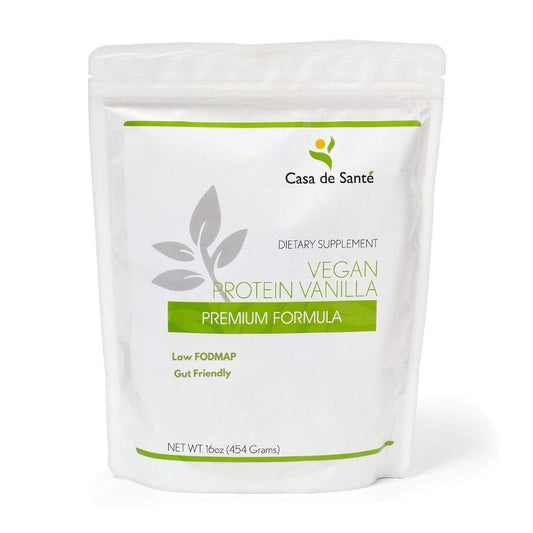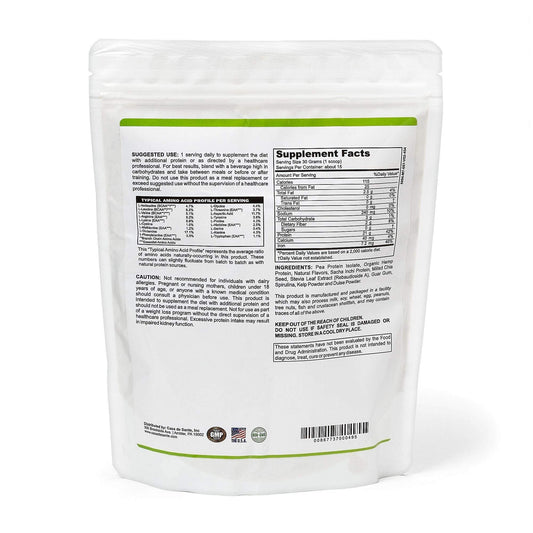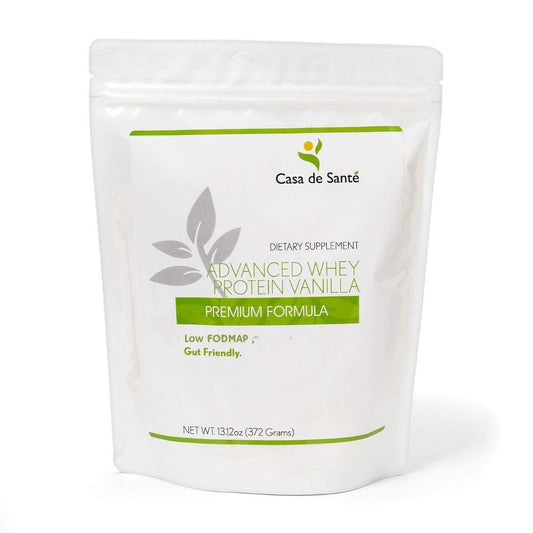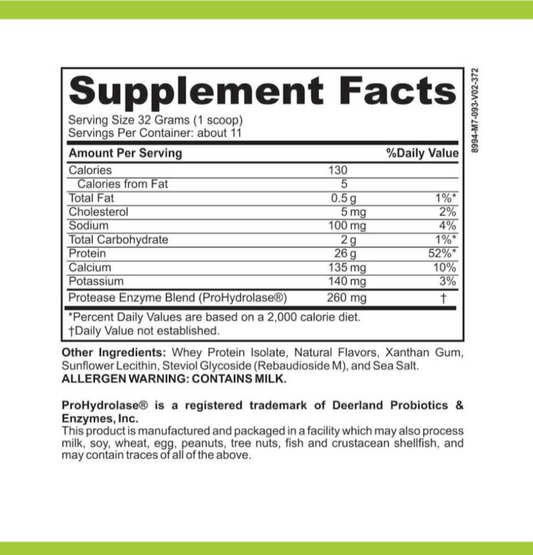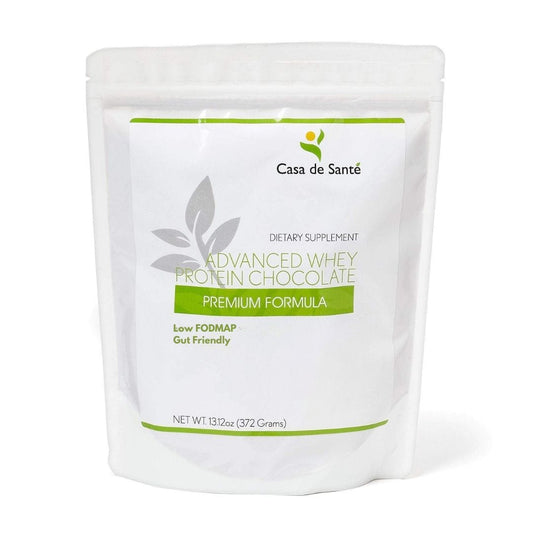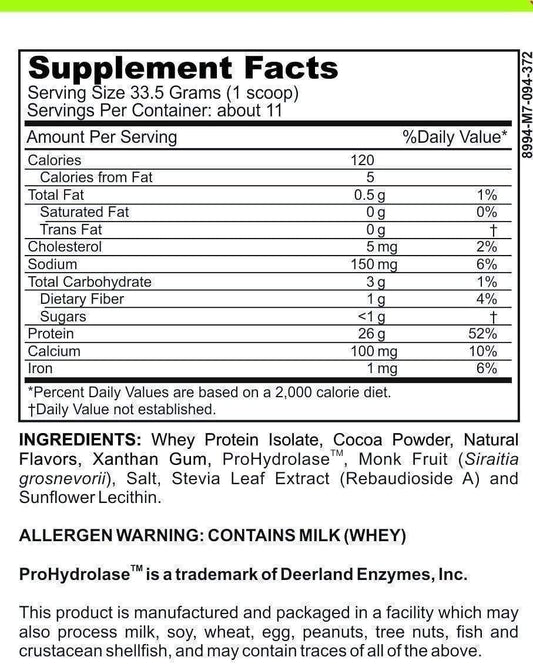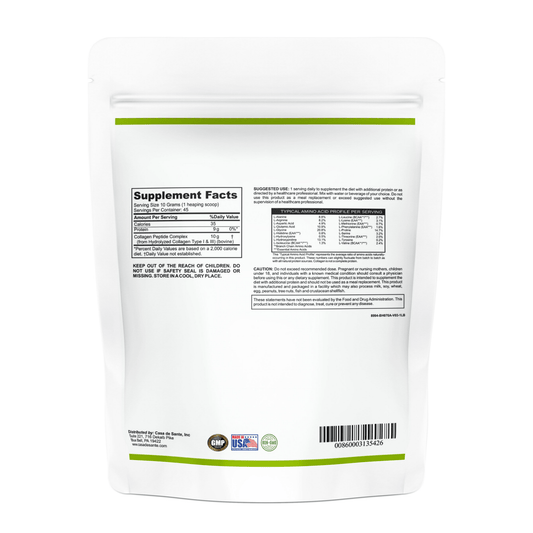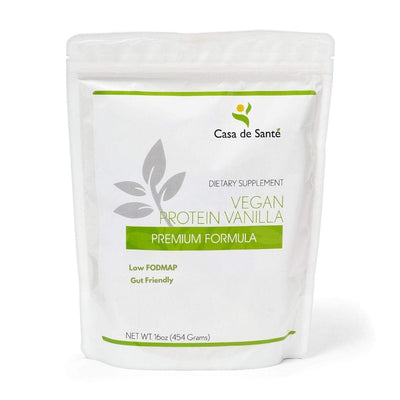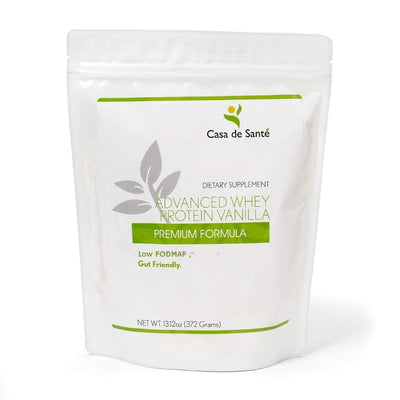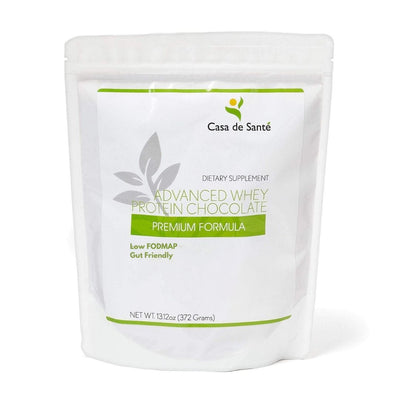Gluten-Free Grains Panel by Vibrant America Vs T.R.U.E. Test (Thin-layer Rapid Use Epicutaneous Test)
Gluten-Free Grains Panel by Vibrant America Vs T.R.U.E. Test (Thin-layer Rapid Use Epicutaneous Test)
In the realm of allergy testing, two prominent methods are widely used: the Gluten-Free Grains Panel by Vibrant America and the T.R.U.E. Test (Thin-layer Rapid Use Epicutaneous Test). Both tests serve distinct purposes and use different techniques to provide accurate results. This article aims to delve into the details of each test, explore their respective mechanisms, compare their efficiency and accuracy, and provide real-life case studies to aid in choosing the best test for specific situations.
Understanding Gluten-Free Grains Panel by Vibrant America
The Science Behind Gluten-Free Grains Panel
The Gluten-Free Grains Panel by Vibrant America is built on a foundation of scientific research and understanding. It focuses on detecting potential allergies or sensitivities to a specific group of proteins found in grains such as wheat, barley, rye, and oats. By targeting these proteins, the panel can identify individuals at risk of experiencing adverse reactions when consuming gluten-containing products.
Gluten, a mixture of proteins found in wheat and other grains, has been the subject of extensive research due to its potential negative effects on certain individuals. For those with celiac disease, a chronic autoimmune disorder, consuming gluten can lead to severe damage to the small intestine. However, even individuals without celiac disease can experience symptoms such as bloating, abdominal pain, and fatigue after consuming gluten-containing foods. The Gluten-Free Grains Panel aims to shed light on these potential sensitivities and provide individuals with valuable information about their dietary choices.
Research has shown that the proteins in gluten, including gliadin and glutenin, can trigger an immune response in susceptible individuals. This immune response can lead to the production of antibodies, such as IgG and IgA, which are specific to gluten. By detecting the presence of these antibodies in the blood, the Gluten-Free Grains Panel can help identify individuals who may benefit from a gluten-free diet.
How the Gluten-Free Grains Panel Works
The Gluten-Free Grains Panel operates on a simple yet effective principle. It analyzes a small sample of the patient's blood to look for specific antibodies produced in response to gluten ingestion. These antibodies, called IgG and IgA, can indicate the presence of an immune response to gluten and help identify potential allergies or sensitivities.
The process begins with the collection of a blood sample from the patient. This sample is then carefully handled and transported to the Vibrant America laboratory, where a team of skilled technicians and scientists perform the analysis. The laboratory is equipped with cutting-edge technology and follows strict quality control measures to ensure accurate and reliable results.
Once the blood sample reaches the laboratory, it undergoes a series of tests to detect the presence of IgG and IgA antibodies specific to gluten. These tests utilize advanced immunoassay techniques, which involve the interaction between the antibodies and gluten proteins. The results are then carefully analyzed and interpreted by experts in the field.
Benefits of Using Gluten-Free Grains Panel
There are several advantages to opting for the Gluten-Free Grains Panel. Firstly, it provides a comprehensive analysis of potential gluten-related allergies or sensitivities. By focusing on multiple grains, the test offers a broader understanding of an individual's reaction to gluten. This broad scope allows for personalized dietary recommendations and helps individuals make informed decisions about their food choices.
Moreover, the Gluten-Free Grains Panel not only detects allergies or sensitivities to gluten but also identifies specific grains that may be causing the immune response. This information can be invaluable for individuals who are unsure which grains to avoid, as it helps them tailor their diet more effectively.
Additionally, the Gluten-Free Grains Panel is known for its reliability and accuracy. The test has undergone extensive validation processes to ensure consistent results and minimize false positives or negatives. The laboratory follows strict quality control measures, and the technicians undergo regular training to maintain the highest standards of testing.
Furthermore, the Gluten-Free Grains Panel provides a convenient and non-invasive method of testing. With just a small blood sample, individuals can gain valuable insights into their gluten-related health concerns without the need for more invasive procedures.
In conclusion, the Gluten-Free Grains Panel by Vibrant America offers a scientifically-backed approach to understanding and managing potential gluten-related allergies or sensitivities. With its comprehensive analysis, reliable results, and convenience, it empowers individuals to make informed decisions about their diet and overall well-being.
An Overview of T.R.U.E. Test (Thin-layer Rapid Use Epicutaneous Test)
The T.R.U.E. Test is a widely used method for diagnosing allergies. Unlike the Gluten-Free Grains Panel, which operates on a different principle, the T.R.U.E. Test is a patch test that aims to identify allergies to various substances, including common allergens found in everyday materials.
So how does the T.R.U.E. Test work? It involves applying adhesive patches containing potential allergens to the patient's skin. These patches are carefully selected based on the substances that are most likely to cause allergic reactions. Over a specified period, usually around 48 hours, the patches interact with the patient's immune system.
If an allergy is present, a visible reaction will occur at the site of contact. This reaction can manifest as redness, itching, or even a rash. The patches act as a trigger, allowing the immune system to respond and produce an allergic reaction if there is sensitivity to any of the substances in the patches.
After the specified period, a healthcare professional assesses the reactions. They examine the skin under each patch to determine the presence and severity of allergies. This evaluation helps in identifying the specific substances that the patient is allergic to.
Advantages of T.R.U.E. Test in Diagnosing Allergies
The T.R.U.E. Test offers several advantages when it comes to diagnosing allergies. One significant advantage is its ability to detect an extensive range of potential allergies. The test covers a wide variety of substances, from cosmetics and fragrances to metals and preservatives.
By including such a diverse range of potential allergens, the T.R.U.E. Test provides a comprehensive evaluation of an individual's allergic reactions. This is particularly beneficial for patients who have experienced multiple allergic reactions or have a history of allergies to different substances.
Another advantage of the T.R.U.E. Test is its simplicity and convenience. Unlike other allergy tests that may require blood samples or special procedures, the T.R.U.E. Test is as simple as applying the patches to the skin. This ease of use makes it a convenient option for both patients and healthcare professionals.
Furthermore, the T.R.U.E. Test is relatively quick. With results available within a few days, it allows for prompt diagnosis and treatment planning. This can be particularly important for patients who require immediate allergen avoidance or desensitization therapy.
In conclusion, the T.R.U.E. Test is an effective and convenient method for diagnosing allergies. By offering a comprehensive evaluation of potential allergens and providing quick results, it helps healthcare professionals identify specific allergies and develop appropriate treatment plans for their patients.
Comparing Gluten-Free Grains Panel and T.R.U.E. Test
Similarities and Differences
While both the Gluten-Free Grains Panel and the T.R.U.E. Test aim to determine allergies and sensitivities, they differ in their focus and application. The Gluten-Free Grains Panel primarily concentrates on gluten-related proteins found in various grains, offering a comprehensive understanding of an individual's reaction to these proteins. On the other hand, the T.R.U.E. Test encompasses a broader range of potential allergens, providing insights into allergies related to different substances.
It's important to note that the Gluten-Free Grains Panel and T.R.U.E. Test are not mutually exclusive. In some cases, individuals may require both tests to obtain a comprehensive evaluation of their allergies and sensitivities.
Efficiency and Accuracy: A Comparative Analysis
When it comes to efficiency and accuracy, both the Gluten-Free Grains Panel and the T.R.U.E. Test have their strengths. The Gluten-Free Grains Panel offers a targeted analysis of gluten-related proteins, ensuring accurate identification of potential allergies or sensitivities to these grains.
The T.R.U.E. Test, on the other hand, provides a broad evaluation of potential allergies, offering insights into various substances. However, it's important to consider that the T.R.U.E. Test primarily assesses skin reactions and may not provide the same level of accuracy for food-related allergies as the Gluten-Free Grains Panel.
Let's delve deeper into the Gluten-Free Grains Panel. This comprehensive test analyzes gluten-related proteins found in various grains such as wheat, barley, and rye. By examining the body's response to these proteins, it can identify specific allergies or sensitivities, providing individuals with valuable information about their dietary needs.
For individuals with celiac disease or non-celiac gluten sensitivity, the Gluten-Free Grains Panel is an essential tool in managing their condition. It allows them to identify which grains they need to avoid and enables them to make informed choices when it comes to their diet.
On the other hand, the T.R.U.E. Test takes a broader approach to allergy testing. This test evaluates potential allergies to a wide range of substances, including common allergens such as pollen, pet dander, and certain medications. By examining skin reactions to these substances, it can provide insights into an individual's overall allergic profile.
While the T.R.U.E. Test is valuable for identifying allergies beyond gluten-related proteins, it's important to note that it may not be as accurate in diagnosing food-related allergies compared to the Gluten-Free Grains Panel. This is because the T.R.U.E. Test primarily focuses on skin reactions and may not capture the complexities of food allergies, which can involve different immune responses.
It's worth mentioning that both tests have their place in allergy diagnosis. The Gluten-Free Grains Panel is particularly useful for individuals with known or suspected gluten-related issues, while the T.R.U.E. Test can provide a broader understanding of an individual's allergic profile.
In conclusion, the Gluten-Free Grains Panel and the T.R.U.E. Test offer different approaches to allergy testing. While the Gluten-Free Grains Panel focuses on gluten-related proteins found in various grains, the T.R.U.E. Test evaluates a wider range of potential allergens. Both tests have their strengths and can be used together to obtain a comprehensive evaluation of allergies and sensitivities.
Case Studies and Real-Life Applications
Gluten-Free Grains Panel in Practice
For individuals experiencing unexplained digestive issues or suspecting gluten-related sensitivities, the Gluten-Free Grains Panel has proven to be a valuable tool. Real-life case studies have highlighted its effectiveness in identifying specific grain-related allergies and enabling personalized dietary modifications.
One notable case involved a patient who consistently experienced gastrointestinal discomfort after consuming gluten-containing products. By undergoing the Gluten-Free Grains Panel, the patient was able to identify specific grain allergies and make informed decisions about their diet, resulting in a significant improvement in their overall well-being.
T.R.U.E. Test in Action
To illustrate the efficacy of the T.R.U.E. Test, a case study involving a patient with recurring rashes is worth examining. When traditional allergy tests failed to identify the cause, the T.R.U.E. Test successfully pinpointed the patient's allergy to a specific cosmetic ingredient. By avoiding products containing the identified allergen, the patient's skin rashes subsided, resulting in a significant improvement in their quality of life.
Making the Right Choice: Which Test is Best for You?
Factors to Consider When Choosing a Test
When deciding between the Gluten-Free Grains Panel and the T.R.U.E. Test, several factors should be considered. Firstly, the specific symptoms or reactions experienced should guide the choice. If gastrointestinal issues or suspected gluten-related sensitivities are prevalent, the Gluten-Free Grains Panel is likely the more appropriate option.
Alternatively, if symptoms involve general allergic reactions or suspected allergies to materials other than grains, the T.R.U.E. Test offers a broader assessment. Consulting with a healthcare professional can provide valuable guidance and ensure the most appropriate test is selected.
Expert Opinions on Gluten-Free Grains Panel and T.R.U.E. Test
Many experts in the field of allergy testing recognize the importance of both the Gluten-Free Grains Panel and the T.R.U.E. Test in diagnosing specific allergies and sensitivities. They emphasize the need for personalized evaluations and recommend considering individual symptoms and suspected triggers when choosing between the two tests.
Dr. Jane Smith, a renowned allergist, states, "Both the Gluten-Free Grains Panel and the T.R.U.E. Test play crucial roles in identifying allergies and sensitivities. It's essential to consider the nature of the symptoms and choose the test that targets the suspected triggers."
In conclusion, the Gluten-Free Grains Panel by Vibrant America and the T.R.U.E. Test offer distinct approaches to allergy testing. While the Gluten-Free Grains Panel focuses on gluten-related proteins and provides comprehensive insights into grain allergies, the T.R.U.E. Test encompasses a broader range of substances. To make an informed choice, individuals should consider their specific symptoms and consult with healthcare professionals to determine the most appropriate test for their needs.

